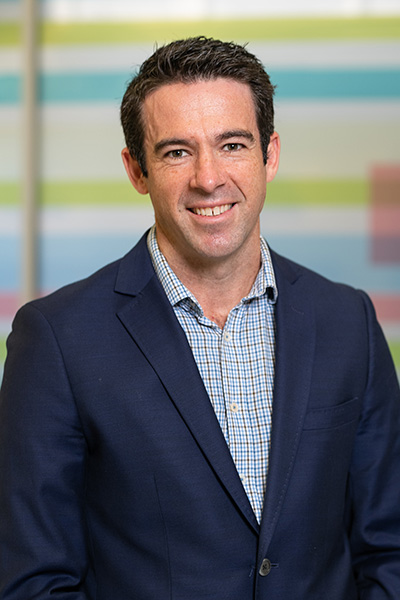While Australia is in a better position than many other countries when it comes to the prevalence of antibiotic-resistant bacteria, the SARS-Cov-2 pandemic could see a rise in home-grown superbugs.
One of Australia’s leading infectious disease physicians, Professor David Paterson treats patients with antibiotic-resistant infections almost every day.
COVID-19 could lead to a rise in superbugs

He fears the large number of COVID patients hospitalised with secondary infections could lead to an increase in superbugs.
Dr Paterson said it remains to be seen whether that will occur, but “that has certainly been the experience overseas when large numbers of COVID patients go into Intensive Care Units”.
Dr Paterson, Director of The University of Queensland’s Centre for Clinical Research (UQCCR) and an Affiliate Professorial Research Fellow with IMB, cites a case where a patient was repatriated back to Brisbane after spending time in an ICU overseas.
“They brought back with them an almost impossible-to-treat bacterium and we had to get an antibiotic from Japan (via a compassionate use program) that’s not commercially available in Australia.”
The treatment was a success and the patient recovered.
Fast-tracking new weapons against superbugs
Dr Paterson said while COVID-19 provides a host of new problems, it has an unexpected upside: newer weapons with which to fight superbugs.
“I’m taking part in a trial on a vaccine against E. coli and the aim of that is to stop people getting [those] infections.”
It’s possible that many more infection-fighting vaccines could be developed on the back of the new vaccine technology that’s been fast-tracked because of the pandemic.
New contact tracing technology could also be deployed in hospital settings to work out the flow of staff members and patients who may have inadvertently spread infections.
Learning vital lessons from COVID-19

“I think we’re going to be assisted amazingly by the lessons we’ve learned from this fight against COVID,” Dr Paterson said.
“I feel very proud, that here in Brisbane, we’re at the world forefront of research into antibiotic resistance and that’s going to benefit our population and save lives internationally.”
Dr Paterson is collaborating with fellow UQCCR and IMB affiliate researcher Professor Jason Roberts on a clinical trial to optimise antibiotic dosing in the critically ill.
Professor Roberts is a clinical pharmacist at the Royal Brisbane and Women’s Hospital and one of Australia’s leading researchers on the topic.
Like Dr Paterson, he’s concerned about the rise of superbugs in Australia.
Professor Roberts said it is not uncommon for Australian clinicians to be confronted by bacteria that are resistant to all antibiotics, and not able to be treated.
“It’s quite a desperate and difficult situation to be confronted with, and that inspires us to take measures that minimise the number of times that occurs,” Professor Roberts said.
Whenever antibiotics are used, the potential for the emergence of resistance will occur.
Using the optimal dose of antibiotics
Optimal antibiotic dosing regimens may differ across patient populations, and Professor Roberts said 15 years of research has been spent understanding which factors contribute to that need.
“We’ve now included all of those models into dosing software which provides an easy-to-access interface where we can enter information about the patient and it performs calculations to tell us the recommended dose.”
The clinical trials will test whether the dosing software improves patient outcomes,as opposed to relying on a pharmaceutical company’s product information.
“While we believe it will be a highly valuable intervention for patients, it may also reduce the emergence of antibiotic-resistant bacteria,” Professor Roberts said.
Reducing the emergence of resistant bacteria
He and his team at The University of Queensland have established a model to precisely match what is seen in patients while they’re undergoing treatment.
“What we’ve observed is, if your dosing isn’t optimal in about 36 to 48 hours, there’s an emergence of resistant bacteria.
By improving dosing, the model should help reduce antibiotic resistance.”
